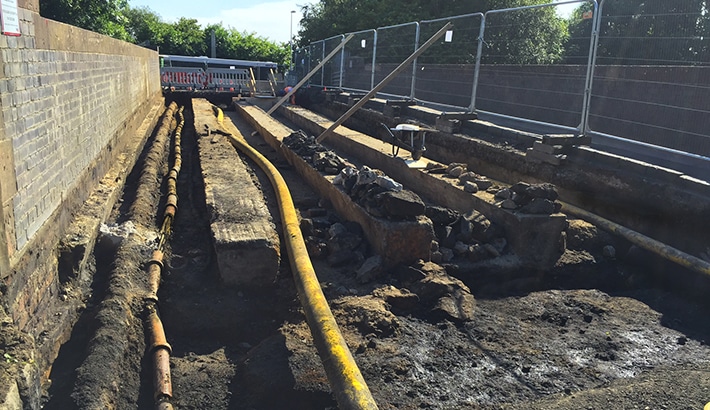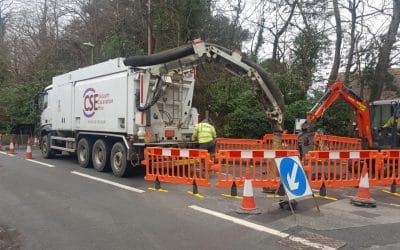Safe Excavation
When a construction site has underground cables buried underneath that need to be exposed for maintenance or upgrades, Vacuum Excavation is fast becoming the preferred option for safety. The no-dig approach is proven to be the smartest and safest method of uncovering services with low risk to workers or the site.
The soft excavation technique allows for the services to be identified and managed optimally without the need to make any sort of contact with them.
The lack of manual handling reduces the risk of injury and better health to the operatives, which is paramount above all.
Why Opt for Vacuum Excavation?
Vacuum Excavation provides a safe option for when underground cables need to be exposed. More often than not, hand digging carries a great deal of risk such as personal injuries and in some cases, fatal incidents can occur if cables are struck. There are up to 60,000 service strikes every with an average costing of £7,000 per strike.
Mechanical equipment, whilst safer for the operator, can damage buried assets resulting in costly repairs not factored into the project budget or timescale. Increases in cost if other methods result in complications, means that Vacuum Excavation is not only safe and smart, but also highly economical.
Our CSE operatives are competent and qualified workers who use equipment and machinery with great emphasis on both efficiency and safety. The area of excavation on certain sites are reduced by precision excavation which leaves less site spoil that needs to be recycled as it is environmentally beneficial. Excavated spoil is stored in the internal skips that are built into the Vacuum Excavators, leaving the site and surrounding area free of any hazards for operatives or the public and also results in easier dumping and filling.
Vacuum Excavation uses the vacuum power to gently pull away ground, carefully exposing underground cables without causing damage with spot on precision. Supported by an air lance, the equipment can be used to excavate around all buried assets, safely exposing them for utilities contractors to access lines for repairs and maintenance.
How Does a Vacuum Excavator work?
The Vacuum Excavator’s remote-control boom uses suction power and air to pull away ground material, lifting it up and pulling it into the machine. The excavated material is drawn through the machine, where it is stored to offload later on the site.
Air is ‘filtered’ inside the machine by passing through 42 air filters, before it is released back out of the machine and into the air outside. The Vacuum Excavator can store up to 10m3 of excavated material which often means that work can be completed without having to stop and offload.





